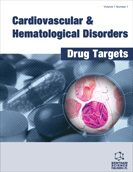Abstract
Time to reperfusion is among the strongest predictors of clinical outcome in patients who present with ST elevation acute myocardial infarction. When time to access is equivalent, primary percutaneous coronary intervention has demonstrated superior outcomes to fibrinolysis. However, where significant delays exist in accessing percutaneous intervention, fibrinolysis has an important role. The potential for fibrinolysis delivery in the pre-hospital setting means that delays to primary percutaneous intervention need to be considered from the time that the patient becomes eligible for fibrinolysis in the field. This can be particularly challenging in patients with symptom duration ofless than two hours, as some evidence suggests fibrinolysis may be particularly beneficial in this early phase. Additionally, access to primary percutaneous intervention provided by an experienced operator, in a timely manner at any time of the day or night, is not an available option in many healthcare settings. This review focuses on the current evidence and practice of pre-hospital fibrinolysis and assesses potential roles for this therapy in the future.
Keywords: Acute myocardial infarction, facilitated percutaneous coronary intervention, pre-hospital fibrinolysis, pre-hospital thrombolysis, primary percutaneous coronary intervention.
Cardiovascular & Hematological Disorders-Drug Targets
Title:Pre-hospital Fibrinolysis in the Management of Patients with ST Elevation Acute Coronary Syndrome: Review of the Evidence, Implementation and Future Directions
Volume: 13 Issue: 3
Author(s): A.C. Camuglia, S.A. Luis, A. Sengupta, J.H.N. Bett and D.L. Walters
Affiliation:
Keywords: Acute myocardial infarction, facilitated percutaneous coronary intervention, pre-hospital fibrinolysis, pre-hospital thrombolysis, primary percutaneous coronary intervention.
Abstract: Time to reperfusion is among the strongest predictors of clinical outcome in patients who present with ST elevation acute myocardial infarction. When time to access is equivalent, primary percutaneous coronary intervention has demonstrated superior outcomes to fibrinolysis. However, where significant delays exist in accessing percutaneous intervention, fibrinolysis has an important role. The potential for fibrinolysis delivery in the pre-hospital setting means that delays to primary percutaneous intervention need to be considered from the time that the patient becomes eligible for fibrinolysis in the field. This can be particularly challenging in patients with symptom duration ofless than two hours, as some evidence suggests fibrinolysis may be particularly beneficial in this early phase. Additionally, access to primary percutaneous intervention provided by an experienced operator, in a timely manner at any time of the day or night, is not an available option in many healthcare settings. This review focuses on the current evidence and practice of pre-hospital fibrinolysis and assesses potential roles for this therapy in the future.
Export Options
About this article
Cite this article as:
Camuglia A.C., Luis S.A., Sengupta A., Bett J.H.N. and Walters D.L., Pre-hospital Fibrinolysis in the Management of Patients with ST Elevation Acute Coronary Syndrome: Review of the Evidence, Implementation and Future Directions, Cardiovascular & Hematological Disorders-Drug Targets 2013; 13 (3) . https://dx.doi.org/10.2174/1871529X1303140129155809
| DOI https://dx.doi.org/10.2174/1871529X1303140129155809 |
Print ISSN 1871-529X |
| Publisher Name Bentham Science Publisher |
Online ISSN 2212-4063 |
 47
47
- Author Guidelines
- Bentham Author Support Services (BASS)
- Graphical Abstracts
- Fabricating and Stating False Information
- Research Misconduct
- Post Publication Discussions and Corrections
- Publishing Ethics and Rectitude
- Increase Visibility of Your Article
- Archiving Policies
- Peer Review Workflow
- Order Your Article Before Print
- Promote Your Article
- Manuscript Transfer Facility
- Editorial Policies
- Allegations from Whistleblowers
- Announcements
Related Articles
-
Stem Cells as a Novel Tool for Drug Screening and Treatment of Degenerative Diseases
Current Pharmaceutical Design Targeting of Nuclear Factor-κB and Proteasome by Dithiocarbamate Complexes with Metals
Current Pharmaceutical Design Dynamic Changes in Phenotypic Groups in Patients with Stable Angina Pectoris after Treatment with Xinxuekang Capsule: A Randomized Controlled Trial
Current Vascular Pharmacology Genetic and Epigenetic Biomarkers for Diagnosis, Prognosis and Treatment of Metabolic Syndrome
Current Pharmaceutical Design Is the Therapeutic Potential of Stem Cells for Myocardial Regeneration Limited by Proarrhythmic Effects?
Current Cardiology Reviews Regulation and Quantification of Cellular Mitochondrial Morphology and Content
Current Pharmaceutical Design A Personalized Approach to Systemic Treatment of Unresectable or Metastatic Pancreatic Adenocarcinoma
Current Pharmacogenomics and Personalized Medicine Therapeutic Potential and Strategies Against Leukocyte-Platelet Interaction in Atherosclerosis
Current Vascular Pharmacology MicroRNAs: Key Players in Microglia and Astrocyte Mediated Inflammation in CNS Pathologies
Current Medicinal Chemistry A Review of Statistical and Machine Learning Techniques for Microvascular Complications in Type 2 Diabetes
Current Diabetes Reviews Adipose-Derived Stromal/Stem Cells (ASC) in Regenerative Medicine: Pharmaceutical Applications
Current Pharmaceutical Design Mesenchymal Stem Cells: New Approaches for the Treatment of Neurological Diseases
Current Stem Cell Research & Therapy Ezetimibe and Vascular Endothelial Function
Current Vascular Pharmacology The Clinical Evaluation of Chronic Cough
Current Respiratory Medicine Reviews Potential for Discovery of Neuroprotective Factors in Serum and Tissue from Hibernating Species
Mini-Reviews in Medicinal Chemistry Mechanism-Based Inhibitors from Phytomedicine: Risks of Hepatotoxicity and their Potential Hepatotoxic Substructures
Current Drug Metabolism Host Neuro- Immuno-Endocrine Responses In Periodontal Disease
Current Pharmaceutical Design Protein Aggregation and Self Assembly in Health and Disease
Current Proteomics Coronary Artery Disease in Patients with Chronic Kidney Disease: A Clinical Update
Current Cardiology Reviews Recent Progress in the Development of Quinoline Derivatives for the Exploitation of Anti-Cancer Agents
Anti-Cancer Agents in Medicinal Chemistry


























